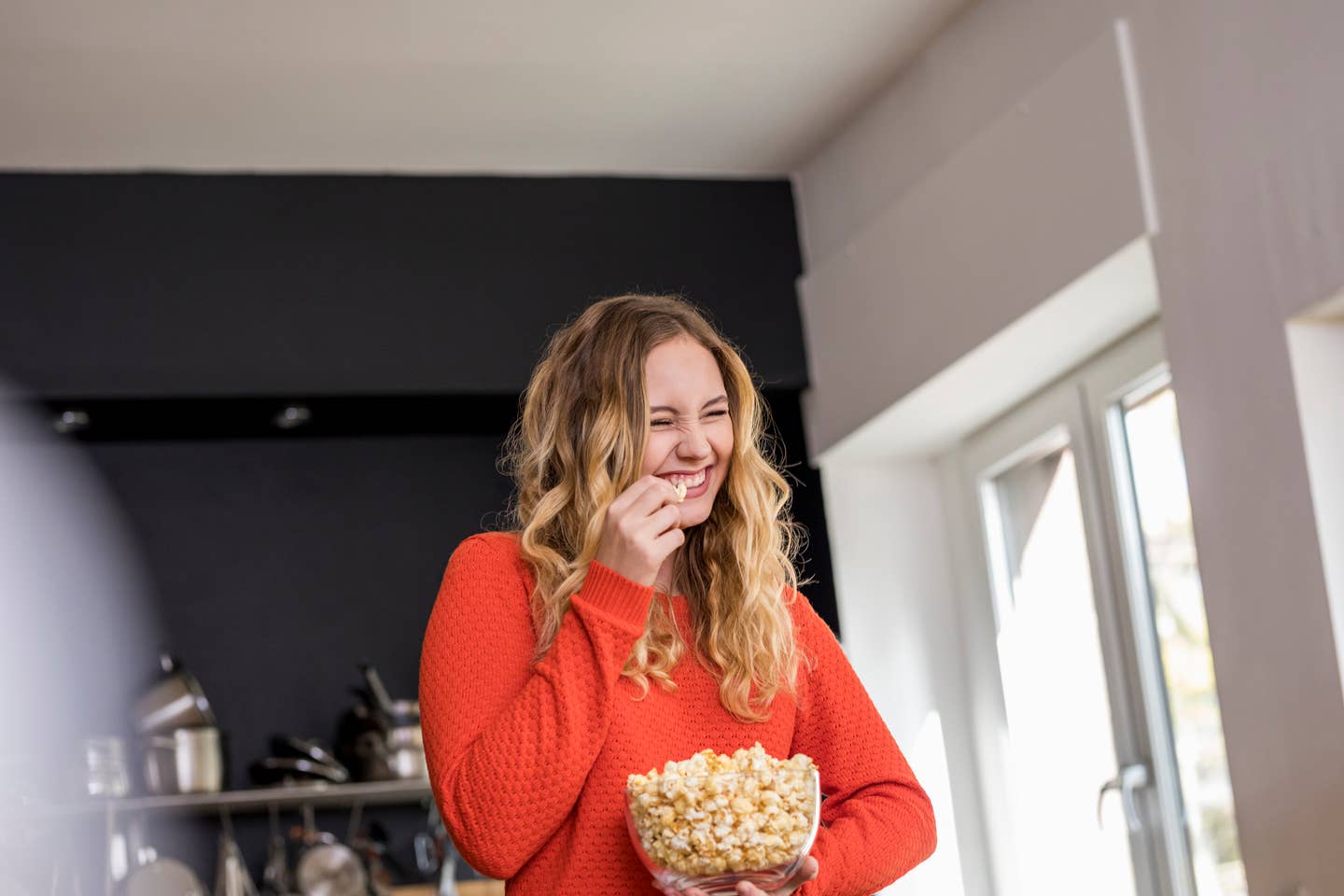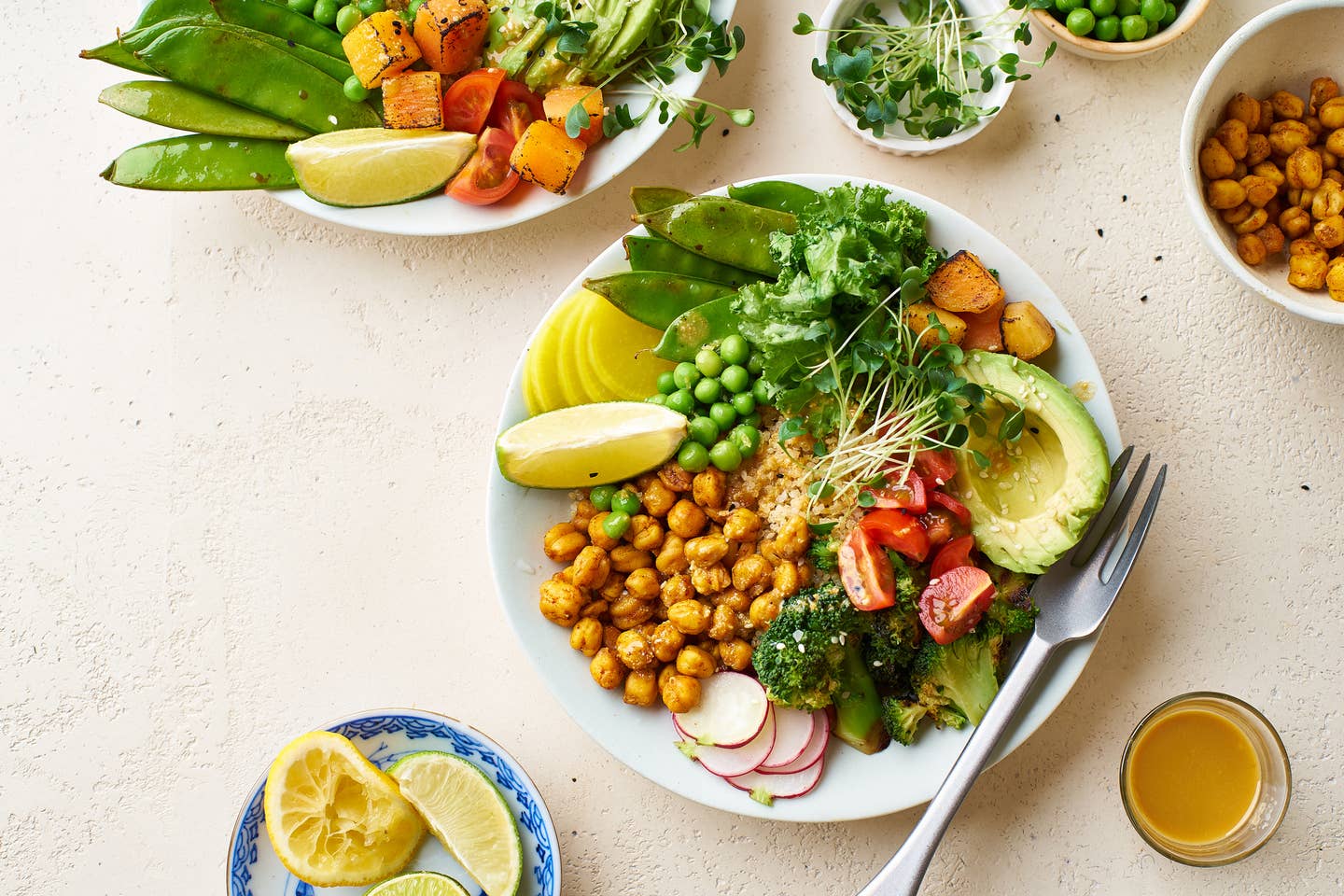
Is Snacking Actually Bad for You? Here’s What an Expert and the Research Says
Snacking has become more common during the pandemic, as more people are working and eating from home, and sales of snacks like chips, popcorn, and pretzels grew more than 11 percent in a year. More Americans are getting more of their calories from snacks than any other source – even back in 2019 a Food & Health Survey found that 57 percent of us were snacking at least once per day, while just 3 percent reported that they “never snack.”
Snacking often gets a bad reputation, but the truth is it isn’t all that bad, depending on what you choose to snack on. Adding 1 to 2 snacks to your eating schedule may actually boost your digestive system, studies have found, since a small snack can prevent overeating at meals. The key to healthy snacking is to choose options that are nutrient-dense (like fruit and vegetables or nuts) versus ones that are high in calories, fat, or added sugar.
Here are the pros and cons of snacking and different snack ideas and styles to stay healthy.
What is considered snacking and why do we do it?
Snacking doesn’t really have a single definition other than the fact that snacks should have about 200 calories or less. Studies show that most people associated snacks with:
- Eating for short periods (about 10 minutes)
- Standing while eating
- Eating alone or between meals
- Having lowered nutrition quality
There are also many reasons why we snack. One of the main ones is hunger but we also snack because we're bored or even to distract ourselves. A recent article states that when we turn to snacks when we’re feeling hungry, we’re more likely to choose healthy options as compared to when we grab a snack because we want to be "entertained" by food.
Other motivations for snacking include:
- Location: Eating a snack at home is linked with healthier food choices than snacking outside of the home, where we are more likely to consume larger portions, higher fat, and lower fiber. (Think about the last time you grabbed a treat on the go, was it a candy bar or bag of chips? You're part of this trend.)
- Social factors: Celebratory occasions where you are pressured to eat tempting foods is a snacking trap, such as a friend's birthday gathering or another special event. How much you eat varies depending on who you’re with. If your friend is eating large portions (sitting watching a game at a bar or at a cocktail party) then you’re likely to mirror that.
- Distracted snacking: We’ve all likely encountered the mindless munching on snacks while watching the Amazing Race or other equally mindless show. Studies have found this is a common theme for any activity that is repetitive or perceived as “boring.”
- Reward or pleasure snacking: More officially known as “hedonic eating," this type of snacking is driven by the rewarding feeling of satisfying a craving, regardless of whether we’re hungry.
So, is snacking bad?
Much like everything else you do, it depends on how you do it. No lesser authority than the Harvard T.H. Chan School of Public Health has weighed in on the pros and cons of snacking.
The pros, or benefits of snacking are:
- Provide energy when it’s been several hours between meals, blood sugar drops
- Help prevent overeating at meals, especially if you wait too long to eat
- Supply beneficial nutrients (if the right snacks are chosen)
- Prevent malnutrition for individuals with poor appetites due to illnesses
And they list the cons of snacking as:
- Unwanted weight gain, especially if they are too high in calories or large portions
- Reduced hunger at mealtimes, which could possibly impact nutrient consumption
- A change in eating behaviors and diet quality if the snacks are processed
Healthy snack options
If you’re looking for some healthy snack options, try out the following savory or sweet snacks that will not only leave you feeling satisfied, but also provide beneficial nutrients like vitamins, antioxidants and minerals.
Popcorn
Instead of reaching for the chips, make yourself a batch of air-popped popcorn. Not only is it filling (about 1.6 times more satiating than potato chips), but it’s low-calorie, with about 30 calories for every cup. Add seasonings, like garlic, pepper, dill, or even cayenne, to give it some extra flavor.
According to a 2019 article, corn has the most antioxidants compared to other grains such as oats, wheat, and rice. Not to mention, popcorn can help us consume more whole grains and fiber. The same article states that popcorn consumers have a 250 percent higher whole grain intake and 22 percent higher intake of fiber compared to those that don’t eat popcorn.
Dark chocolate with nuts
If you love the combination of peanut butter and chocolate, you will enjoy snacking on whole nuts and dark chocolate.
When it comes to nuts, they contain a variety of beneficial compounds including:
- Healthy polyunsaturated and monounsaturated fats
- Protein
- Soluble and insoluble fiber
- Vitamins E and K
- Folate
- Thiamine
- Minerals including magnesium, potassium, and selenium
You can also take your pick from the multiple types of nuts available.
- Almonds
- Hazelnuts
- Cashew nuts
- Brazil nuts
- Macadamias
- Walnuts
- Pistachios
- Peanuts
While nuts are great solo, pair them up with dark chocolate to get additional fiber, minerals, and beneficial antioxidants. Just be sure to choose dark chocolate that’s at least 70 to 85 percent cacao and limit your portions to about 1 ounce per day.
Vegetables dipped in hummus
A good way to meet your daily vegetable intake is to enjoy your favorites with a side of hummus. This dip is primarily made with chickpeas and tahini which makes it both plant-based and full of beneficial nutrients.
A 2020 study found that snacking on hummus helped to reduce future snacking on desserts by 20 percent compared to no snacking or snacking on granola bars. Eating hummus also reduced hunger by about 70 percent and increased satiety by 30 percent compared to no snack.
Fruit salad
If you’re in the mood for something sweet instead of savory, mix together a fresh fruit salad. Choosing a wide range of different colored fruits, like red, blue, and orange, will provide several diverse vitamins and minerals.
Not only will fruit give you lots of necessary micronutrients, but a study also found that choosing fruit as a snack is associated with lower anxiety and depression.
Bottom Line: Snacking is Only Bad for You if You Choose Bad Snacks
When the urge to snack hits, ask yourself if you're truly hungry or bored. If hungry, choose snacks that are full of natural fiber, nutrients, and antioxidants such as fruit, vegetables, nuts, and dark chocolate. Snacking can be a great part of your daily diet as long as you choose options that supply you with beneficial macronutrients, vitamins, and minerals.
More From The Beet






